Shut and cut
It took American inventors over thirty years to advance glass pressing to the point where it was capable of this. At 9 inches tall and 7½ inches in diameter, and made by the New England Glass Company circa 1869, it is the largest pitcher pressed before 1880.
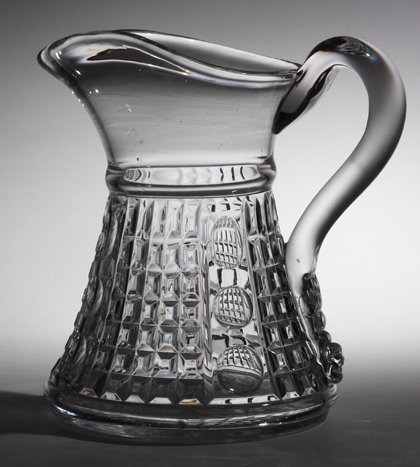
Why did it take so long?
It's easy to imagine pressing glass into a nearly flat mold to make a bowl, or a deeper mold whose sides continue flaring outwards all the way to its rim, to make a tumbler. A plunger, shaped like the interior of the final form, is pressed down into the middle of the mold that shapes its outside. Molten glass is forced through the mold, from the bottom all the way to the top.
But for this pitcher, and the simpler decanter form below, how on earth do you remove the plunger when you are done?
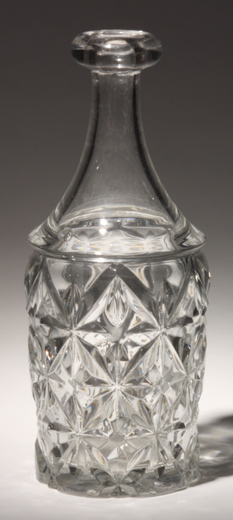
The plain neck of the decanter reveals the first trick. The result of pressing was not a decanter but, rather, an oversize tumbler. At it's top it had an extra, unpatterned cylinder of glass. That cylinder was then stretched and drawn upwards and inwards to form a neck. Clever.
The earliest pressed decanters and bar bottles are all basically oversized tumblers, usually with elaborately patterned bodies and contrastingly stark, plain pulled up necks and hand finished rims. When the cylinder-to-become-a-neck was pressed with a pattern, that pattern was distorted during hand finishing, like this:
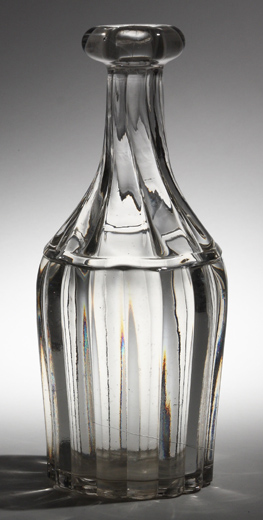
Regardless, all early pressed decanters have polished pontil scars to prove that they were finished by hand after several reheatings and reshapings.
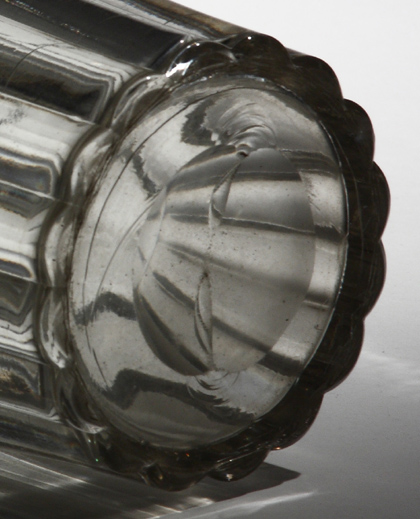
The base of the pitcher reveals the secret of its pressing:
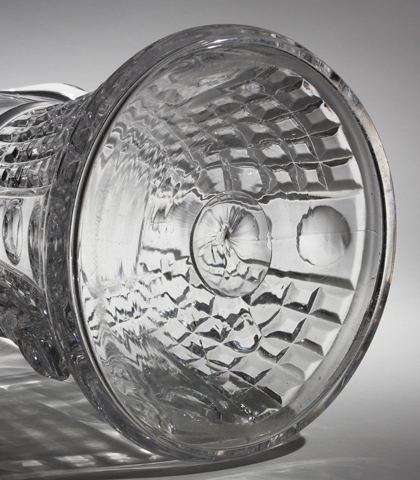
When it was removed from the mold it had an extra cylinder of glass not only at its top — to become its neck and spout — but also at its bottom — to become its base. It was pressed upside-down, through its base, allowing it to be wider at its base than higher up.
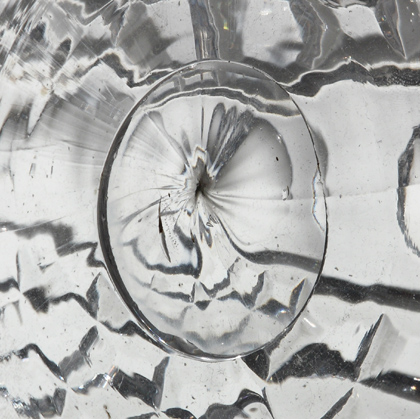
This closer look shows an extra polished disk of glass at the center of the base. Around it, the base shows lines that converge on the center. The glass worker tooled the glass of the base cylinder, creating an ever-narrowing neck that became closed up, with excess glass cut away — the technique known as shut and cut.
The extra disk of glass came when a pontil rod was attached to the newly created base, allowing the worker to shift attention to the top of the pitcher, giving it a neck and handle in the usual way. Remaining glass from the pontil rod was polished down rather than removed. This gives the appearance of a closure, covering and protecting the scar left by shut and cut.
With considerable hand work in its base, rim and handle — not to mention considerable skill in the creation and operation of an enormous glass press and mold — this remarkable pitcher shows the inventive process at full steam, balancing costs of hand worked shaping against the considerable cost savings of decoration imparted during pressing.

